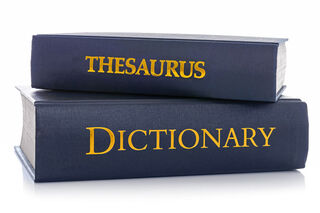Deception
Stretching the Truth to Detect Deception
The secret to finding the truth is to ask for definitions.
Posted May 15, 2020

Each person constructs an internal dictionary of the words he or she uses. With few exceptions, people share the same or similar definitions for the words they use. The similarity of definitions allows people to communicate efficiently. When one person speaks, he or she automatically assumes that the definitions of the words spoken approximate the definitions listeners apply to the words they hear. Fortunately, the overwhelming majority of people share similar word definitions. If this were not the case, then communication would be difficult. When a speaker holds up an object and says “cup,” the listener registers the same object as a cup.
Communication problems occur when a speaker holds up an object, says “cup,” and the listener registers an object other than the object the speaker is holding. When buyers make purchases, they rely on shared definitions. The words buyers use to describe the goods and services they want to purchase must approximate the definitions of the words the sellers use to describe the goods and services offered for sale. If this were not the case, then commerce would be extremely difficult.
Describing emotions and ideas becomes more difficult because these concepts are less tangible. Nonetheless, the definitions of the words people use to communicate their ideas and emotions correspond, with few exceptions, to the definitions listeners or readers use to decode communications. People who act in good faith effectively communicate with one another with little difficulty.
Liars, on the other hand, elongate or restrict their personal word definitions to introduce definitional relativity. Problems arise because liars typically do not notify listeners or readers of the change in their personal word definitions.
Liars can ostensibly tell the truth based on the elongated or restricted personal definitions of the words they use. The recipient of a deceptive communication ascribes the generally accepted word definitions, oblivious to the fact that the deceiver changed his or her internal word definitions. Elongating or restricting the personal definitions of the words people use becomes elastic truth. Consider the following illustration.
Jimmy put three drops of poison in a cup, gave it to his wife to drink, and she died. During the subsequent investigation, a detective asked Jimmy if he put three drops of poison in a cup and gave it to his wife. Jimmy responded, “I did not put poison in a cup.” Jimmy’s response is truthful because, unbeknownst to the detective, Jimmy changed his internal definition of the word “cup” to “a ceramic vessel that holds liquidy substances.” Now, if the detective had asked Jimmy, “Did you put poison in a ceramic vessel that holds liquidy substances and give it to your wife,” Jimmy could truthfully respond "no,” because unbeknownst to the detective, Jimmy again changed his internal definition of the word “cup” from “a ceramic vessel that holds liquidy substances” to “a temporary reservoir for drinkable fluids.” Liars routinely use this technique to lie. Liars introduce definitional relativity by either elongating or restricting the definitions of words or concepts to include or exclude the questionable activity.
Effective liars do not notify their targets of the change in their personal word definitions. To do so would alert the targets to the deception. Without prior notification of definitional differences, interviewers tend to apply their own internal definitions to the liar’s words. Parents often encounter this problem when questioning their children. For example, mom comes home and finds a broken lamp. She suspects that her son, against strict house rules, flew his radio-controlled helicopter indoors. She made the following inquiry.
Mom: Did you break the lamp?
Son: No.
Mom: Did you knock it off the table?
Son: No.
Mom: Did you have anything to do with the lamp breaking?
Son: No.
Mom: Were you flying your helicopter in this room?
Son: Yes.
Mom: Did your helicopter break the lamp?
Son: It was an accident, Mom. It just flew off on its own and hit the lamp, honest!
Mom used the trial and error method to uncover the truth. Her son changed his definition of the word “break” and, more specifically, what caused the lamp to break. Her son did not break the lamp. The helicopter did. The helicopter did not knock the lamp off the table. It flew into it. Even though her son was at the controls, the helicopter somehow flew off on its own and hit the lamp. Her son told the truth because he kept changing his internal definitions for the words his mother used. He only told the truth when his mother used the exact words as those words were defined by her son in his internal dictionary. Her son told the truth, but the truth about what?
For more tips and techniques to detect deception see Psychological Narrative Analysis: A Professional Method to Detect Deception in Written and Oral Communications.


